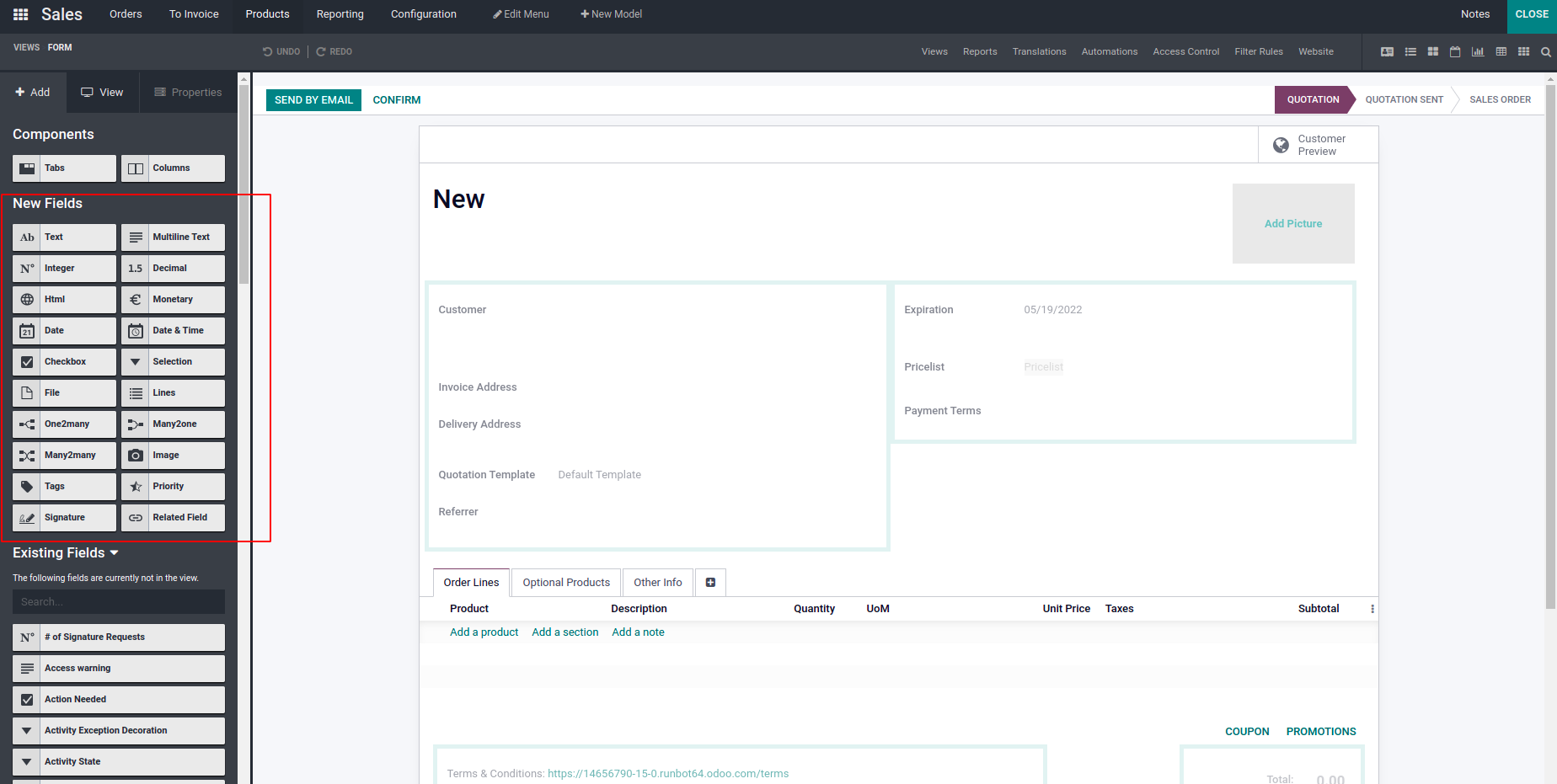You can add different types of fields to the view by dragging and dropping the field
button to the place in the form where it is to be placed. The various types of fields
provided by Odoo are:

- Text: Used to carry a simple line of text.
- Multiline text: Used to carry multiple lines of text.
- Integer: Used to carry integer values.
- Decimal: Used to carry decimal numbers.
- HTML: Used to hold web URLs
- Monetary: Used to carry monetary values.
- Date: used to hold dates
- Date & Time: Used to carry Date and time.
- Checkbox: Used to carry binary values.
- Selection: Used to carry selection fields.
- File: Used to carry files.
- Lines: This type of field allows the user to add multiples lines of data.
- One2many: A one-way directional field for which the user can choose multiple records
from the table. For example, a sale order can have multiple sales order lines.
- Many2one: A one-way directional field for which the user can choose one record from
the table. Product category is an example of the Many2one field. Each of the
products
belongs to only one category.
- Many2many: A two-way directional field for which the user can choose multiple
records
from the table. Example: multiple tags used in lead’s form.
- Image: The user can add images to this field.
- Tags: The tags can be added in this field.
- Priority: Priority can be set using this field.
- Signature: This field is used to add a signature.
- Related field: This field allows you to automatically add data related to another
model. You can set the related field from the wizard displayed when this field is
dragged to the view. Multi-level relations can be specified by choosing fields one
by one from the list in the wizard.
To set the field properties like name, placeholder, default, etc., click on the
field and add the options under the properties tab on the left side.